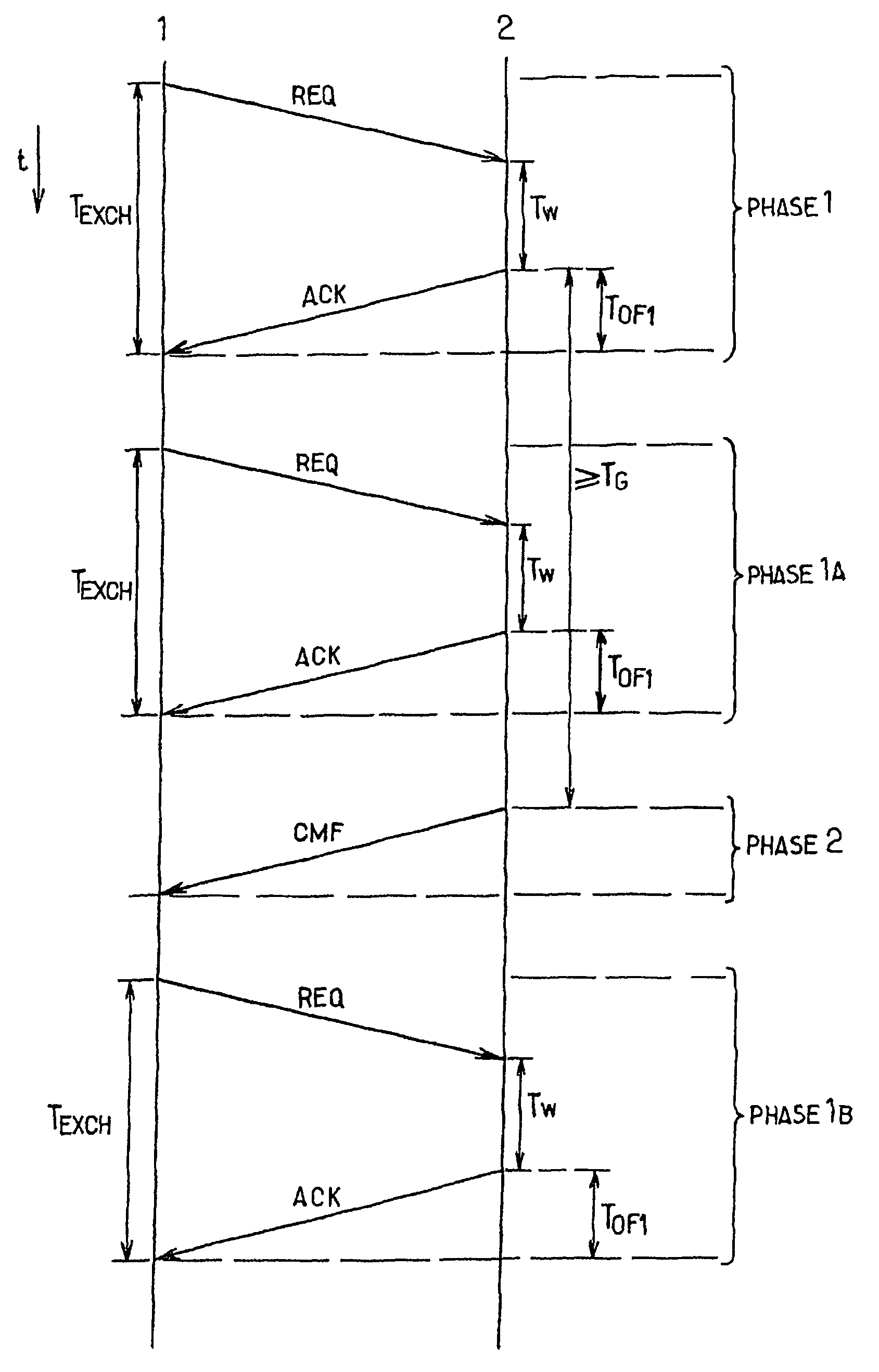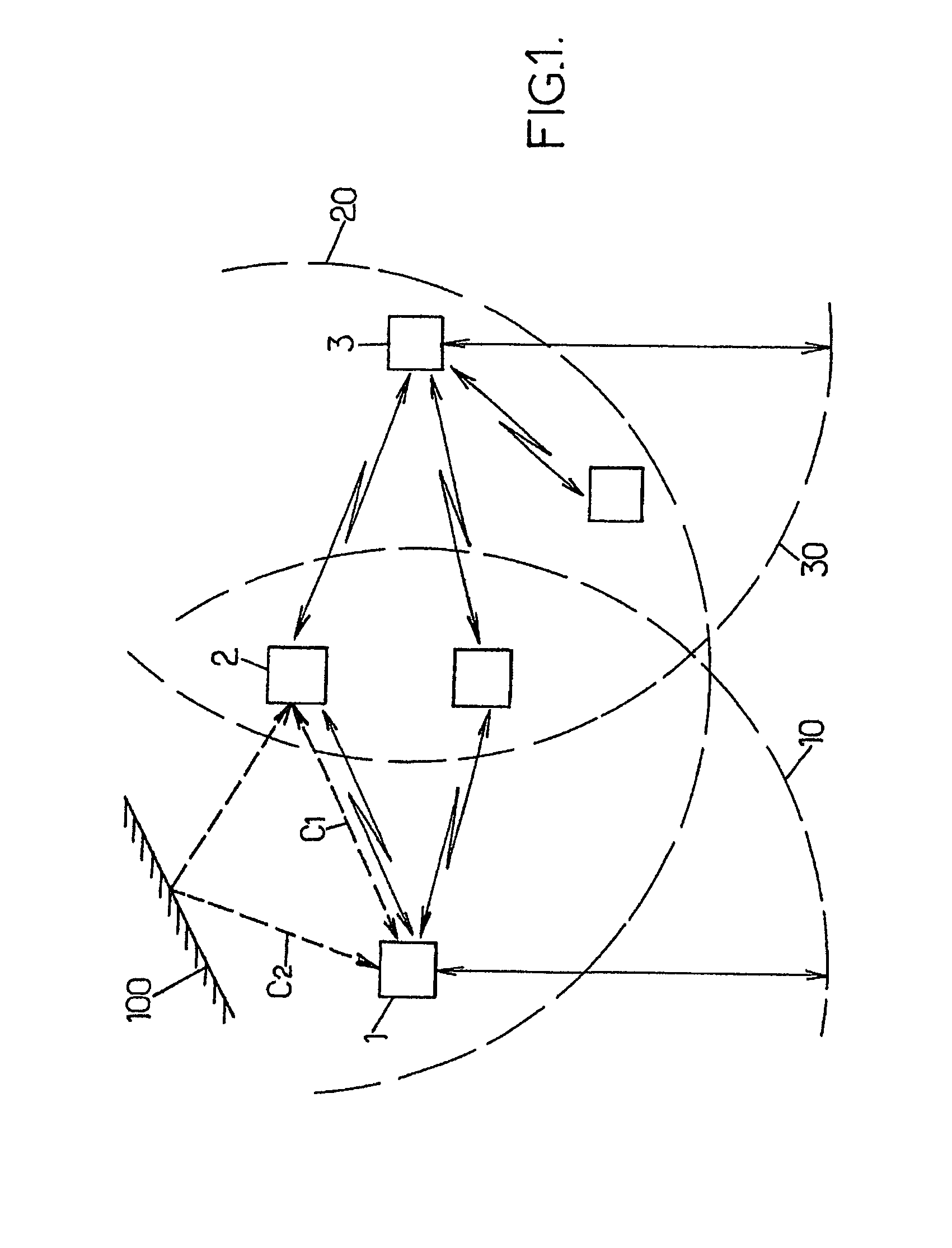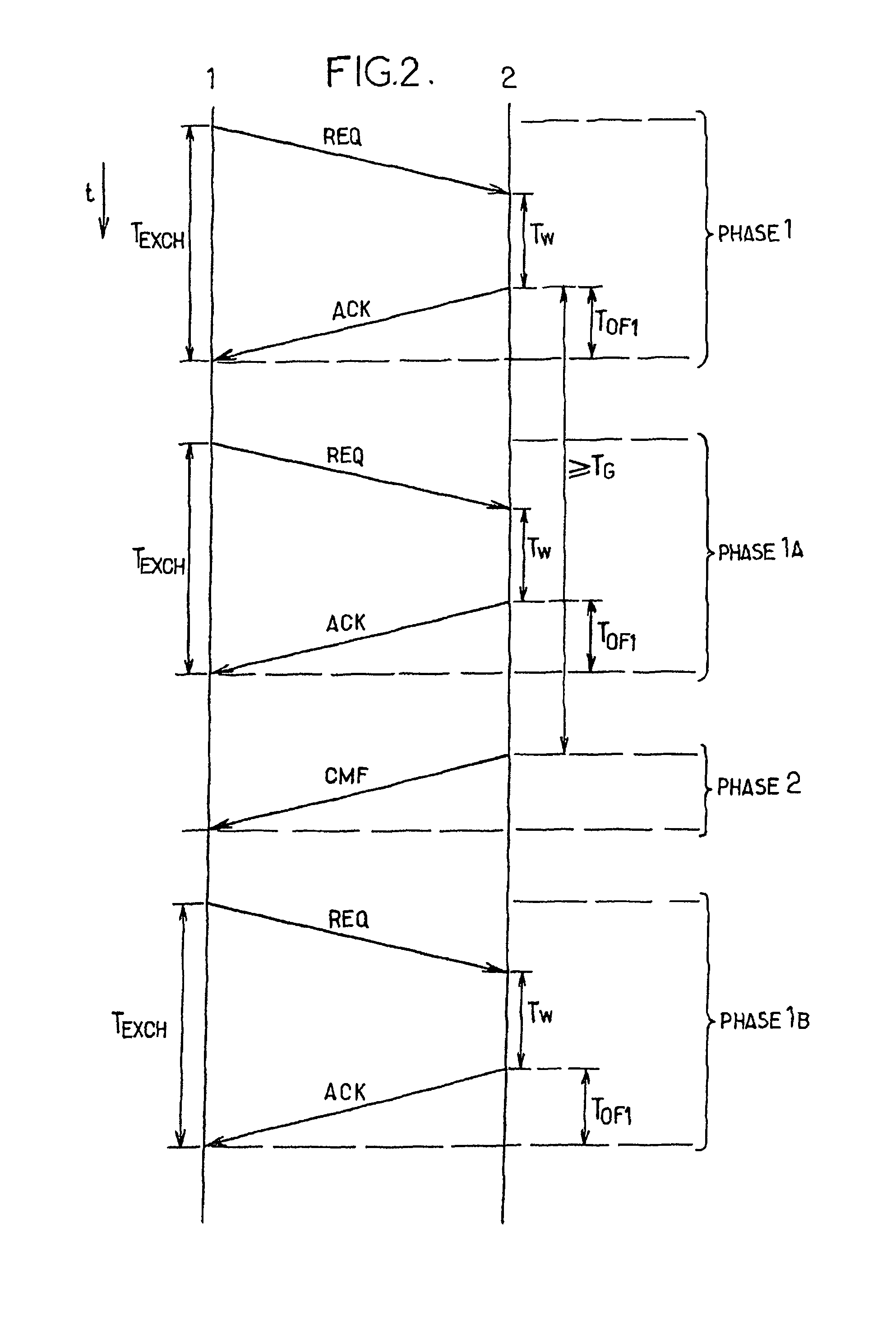Method of measuring a distance between two radio-communication devices and device adapted to implement one such method
a radiocommunication device and distance measurement technology, applied in the direction of measurement devices, transmission monitoring, instruments, etc., can solve the problems of inconvenient operation, inconvenient measurement and/or control, and inability to accurately estimate the distance between two radiocommunication devices, and achieve the effect of reducing energy consumption, reducing the accuracy of the duly obtained distance estimation, and improving the accuracy of the obtained distance estimation
- Summary
- Abstract
- Description
- Claims
- Application Information
AI Technical Summary
Benefits of technology
Problems solved by technology
Method used
Image
Examples
Embodiment Construction
[0042]According to FIG. 1, a communication system comprises a set of radio transmitter-receiver devices, three of which are referenced 1, 2 and 3. Each transmitter-receiver can constitute the radio interface of a sensor forming part of a home automation management system, for example. For such an application, certain sensors can be dedicated to thermal measurements, others to identifying the state of heating element control units, and so on. It can be an “ad hoc” system, which in turn manages the communication sequences between the various sensors. This can be, in particular, a Bluetooth®-type (i.e., wireless-type) system known to those skilled in the art. The broken-line curves 10, 20 and 30 in the figure diagrammatically indicate the respective range limits of the devices 1, 2 and 3. Thus, the device 2 can communicate with each of the devices 1 and 3, whereas the latter are out of radio range of each other.
[0043]FIG. 2 indicates the various actions carried out in the devices 1 and...
PUM
 Login to View More
Login to View More Abstract
Description
Claims
Application Information
 Login to View More
Login to View More - R&D
- Intellectual Property
- Life Sciences
- Materials
- Tech Scout
- Unparalleled Data Quality
- Higher Quality Content
- 60% Fewer Hallucinations
Browse by: Latest US Patents, China's latest patents, Technical Efficacy Thesaurus, Application Domain, Technology Topic, Popular Technical Reports.
© 2025 PatSnap. All rights reserved.Legal|Privacy policy|Modern Slavery Act Transparency Statement|Sitemap|About US| Contact US: help@patsnap.com



